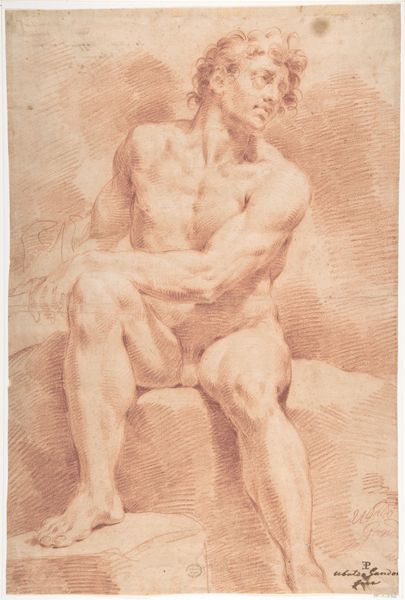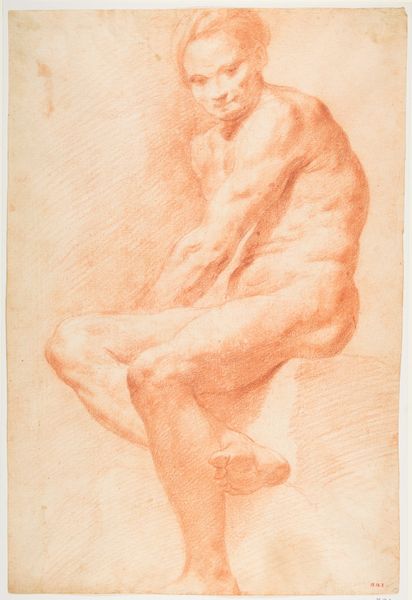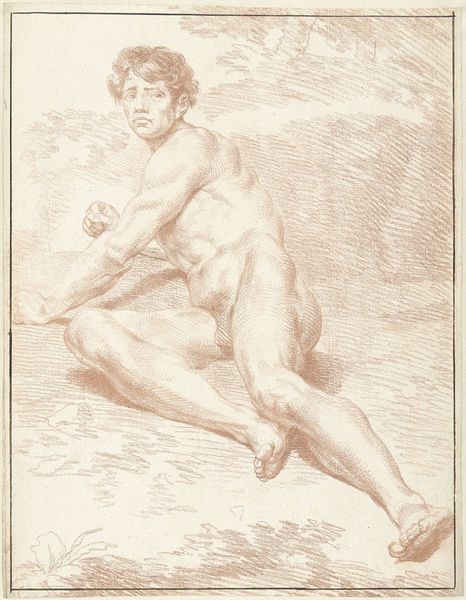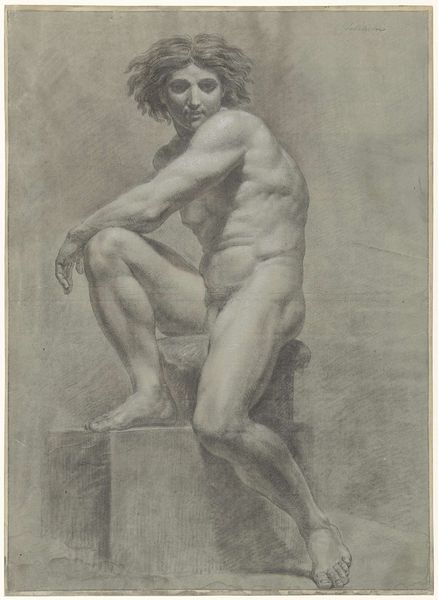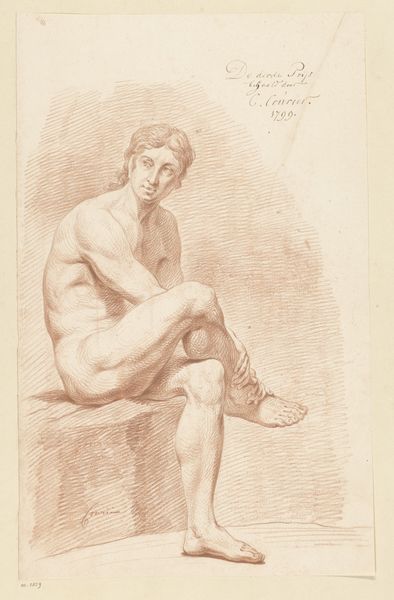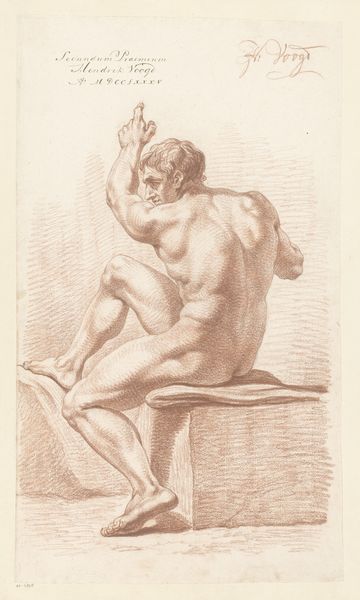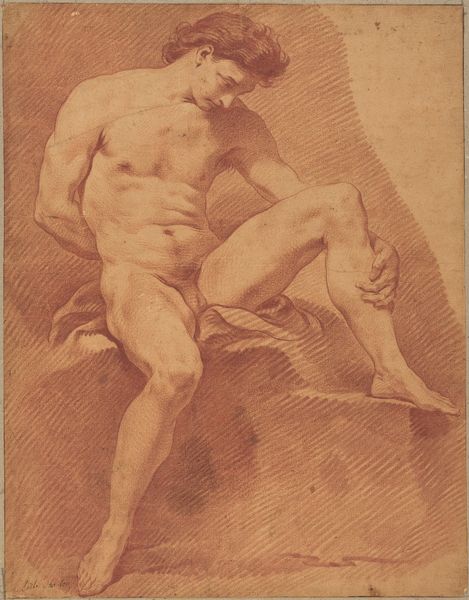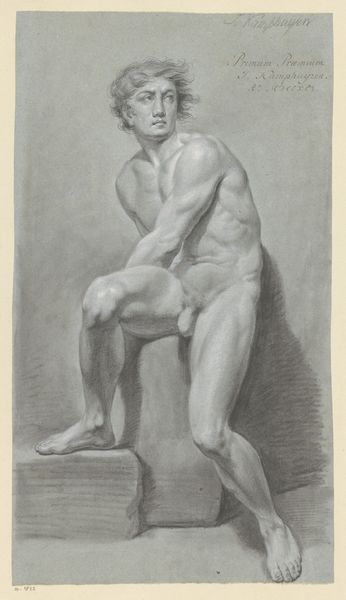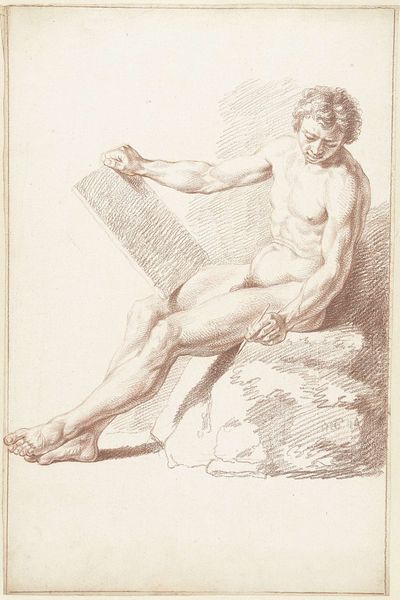
Seated Nude Male Figure (recto); Seated Figure (verso) 1666 - 1724
0:00
0:00
drawing, print, charcoal
#
portrait
#
drawing
#
baroque
# print
#
charcoal drawing
#
figuration
#
portrait reference
#
portrait drawing
#
charcoal
#
italian-renaissance
#
nude
#
portrait art
#
male-nude
Dimensions: 21 x 15-11/16 in. (53.4 x 39.8 cm)
Copyright: Public Domain
Editor: Here we have "Seated Nude Male Figure" with a corresponding sketch on the reverse side, created by Benedetto Luti sometime between 1666 and 1724. The drawing is composed with charcoal. The striking thing about this work is the tension, his pose almost seems strained, but the gaze in his eyes seems to stare directly at the audience. What’s your take on this work? Curator: The power in this piece comes from the undeniable confrontation with the male gaze, something so deeply embedded in art history, and something that still influences social discourse today. What I see here is the artist turning this familiar trope in on itself. Luti isn’t simply depicting a nude male form for aesthetic consumption; instead, the subject looks out at the viewer, demanding recognition of his humanity beyond just his physical form. Editor: That's interesting. The confident expression and the muscular form definitely convey a sense of power, maybe even a challenge to the viewer. Is Luti trying to say something about the male role in Baroque society, maybe pushing against conventions? Curator: Absolutely, and that's where art history becomes incredibly potent. During the Baroque period, male nudes were typically allegorical or heroic, devoid of true emotion or individual character. Luti infuses vulnerability, and a self-aware, complex expression into this figure. What does it mean when we confront those old heroic ideals with contemporary identity and notions of beauty? How do such drawings redefine what strength and authority looks like when they're untethered from conquest or godliness? Editor: It certainly gives me a lot to consider when looking at this. Thanks for bringing a different context to the artwork! Curator: My pleasure. It’s exciting to examine these classic themes through a modern lens and consider how we continue these dialogues around representation today.
Comments
No comments
Be the first to comment and join the conversation on the ultimate creative platform.
